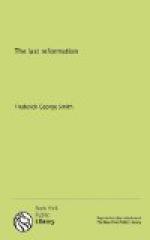[Sidenote: A holy church]
Since the local church was designed to exhibit concretely the spiritual body of Christ, none but saved persons could properly hold membership therein; therefore the local church when in its normal condition was free from sin and sinners. The physical body, which Paul uses to illustrate the spiritual body, is normal only when every member possesses the life of the body and functions properly. So also was the body of Christ. It was not God’s will that there should be (as recognized members) “sinners in the congregation of the righteous” (Psa. 1: 5). It was his will to purge Jerusalem “by the spirit of judgment and by the spirit of burning” until “he that is left in Zion, and he that remaineth in Jerusalem, shall be called holy, even every one that is written among the living in Jerusalem” (Isa. 4:3,4).
[Sidenote: Discernment and judgement necessary]
The local congregation in Jerusalem did not cease to be the church of God because two unworthy persons obtained recognition in it. This incident gave occasion for the church to manifest its inherent life by its ability to discern and then cast off the secret offenders just as a healthy physical body casts off effete matter. As a result of the judgment pronounced on Ananias and Sapphira, “great fear came upon all the church ... and of the rest durst no man join himself to them; but the people magnified them” (Acts 5:11, 13). The fiery judgments of God put an end to formal church-joining there, as a result of which “believers were the more added to the Lord, multitudes both of men and women” (verse 14). “And the Lord added to them day by day those that were being saved” (Acts 2:47, R.V.).
A clean, pure local church was the divine standard. It is evident that such could never be obtained and maintained except by the power of the Holy Spirit, who discerned evil and prompted its elimination. Peter discerned the condition of the two false members in the church at Jerusalem and removed that blemish. He also exposed the hypocrisy of Simon at Samaria, and Paul pointed out the evil affection in the church at Corinth and directed its removal. Chief responsibility for the maintenance of the normal condition of the church will be considered in our discussion of the particular features of church organization and government.




